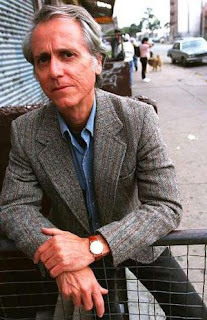
The second half of MAO II concerns Bill's attempts to free a writer being held hostage by a terrorist group. When DeLillo wrote MAO II, anxiety about the role of the writer in world terror was at an all-time high. Particularly, many writers worried about the fate of their fellow novelist, Salman Rushdie--a famous British-Indian author, who was sentenced to death after publishing The Satanic Verses (1988), a novel that playfully and irreverently represented the story of Muhammad, among its many other story lines.
Thankfully, the fatwa (death sentence) placed on Rushdie's head by the Ayatollah Khomeini, the then-leader of Iran, was never carried out. However, Rushdie suffered for many years under the fear of death and pursuit by a series of assassins bent on carrying out Khomeini's will. Rushdie's difficult situation greatly affected many writers during the period in which DeLillo was writing. What did it mean that someone would want to kill a writer for insulting a religious figure or deity? Did other writers need to live in fear? The case of Rushdie haunts MAO II.








